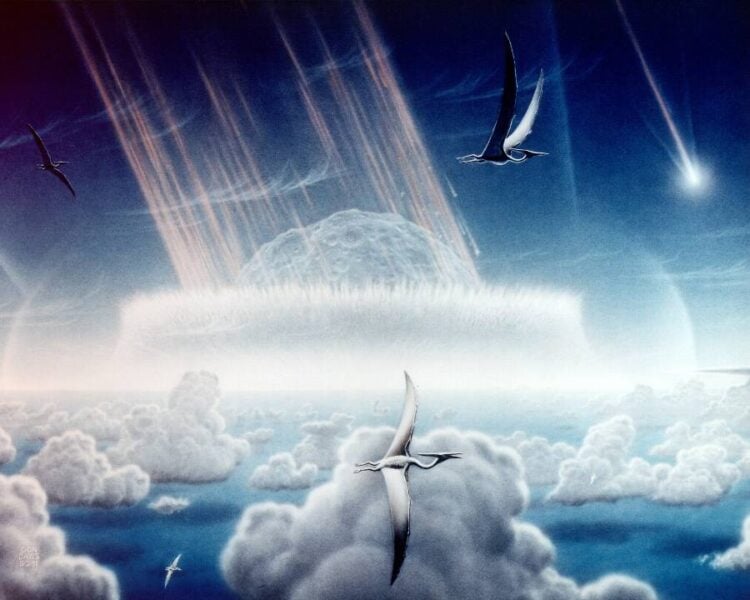The massive asteroid that struck Earth 66 million years ago, wiping out the dinosaurs, was a rare type that originated from the outer reaches of our solar system, according to new research published in Science. This finding settles a long-standing debate about the nature of the Chicxulub impactor and provides fresh insights into Earth’s ancient history.
Scientists analyzed samples from the crater and other impact sites to determine the asteroid’s composition. They found that it closely matched a specific group of space rocks called carbonaceous chondrites, which typically form beyond Jupiter’s orbit.
Tracing the Killer’s Origins
The research team, led by Mario Fischer-Gödde, examined ruthenium isotopes in rock samples from the Cretaceous-Paleogene (K-Pg) boundary layer. This global layer of sediment marks the time of the mass extinction event.
“We compared the ruthenium signatures from the K-Pg boundary to those from other impact events and meteorite samples,” Fischer-Gödde explained. “The match with carbonaceous chondrites was striking.”
This discovery rules out other proposed sources for the impact, including comets and more common types of asteroids from the inner solar system. It also challenges previous theories about the frequency of such impacts from outer solar system objects.
A Cosmic Dice Roll with Devastating Consequences
The findings suggest that Earth’s most recent mass extinction was the result of an unlikely cosmic event. Carbonaceous asteroids from the outer solar system rarely find their way into collision courses with Earth.
Dr. Sarah Johnson, a planetary scientist not involved in the study, commented on its significance: “This research shows just how improbable the dinosaurs’ extinction was. If a different type of asteroid had struck Earth, the outcome might have been very different.”
The team’s analysis also revealed that similar carbonaceous impactors may have played a role in Earth’s early formation. Samples from ancient impact sites dating back 3.5 billion years showed similar compositional signatures.
“These early impacts could have delivered important volatile elements and organic compounds to young Earth,” Fischer-Gödde noted. “It’s possible they played a crucial role in making our planet habitable.”
Why it matters: Understanding the nature and origin of the Chicxulub impactor provides valuable insights into Earth’s vulnerability to cosmic threats. It also sheds light on the delivery of essential elements to our planet throughout its history, potentially influencing the development of life.
The research opens up new avenues for studying Earth’s impact history and the distribution of asteroid types in the solar system. Future work may focus on identifying other ancient impact sites and further refining our understanding of how celestial bodies have shaped our planet’s evolution.
If our reporting has informed or inspired you, please consider making a donation. Every contribution, no matter the size, empowers us to continue delivering accurate, engaging, and trustworthy science and medical news. Independent journalism requires time, effort, and resources—your support ensures we can keep uncovering the stories that matter most to you.
Join us in making knowledge accessible and impactful. Thank you for standing with us!

